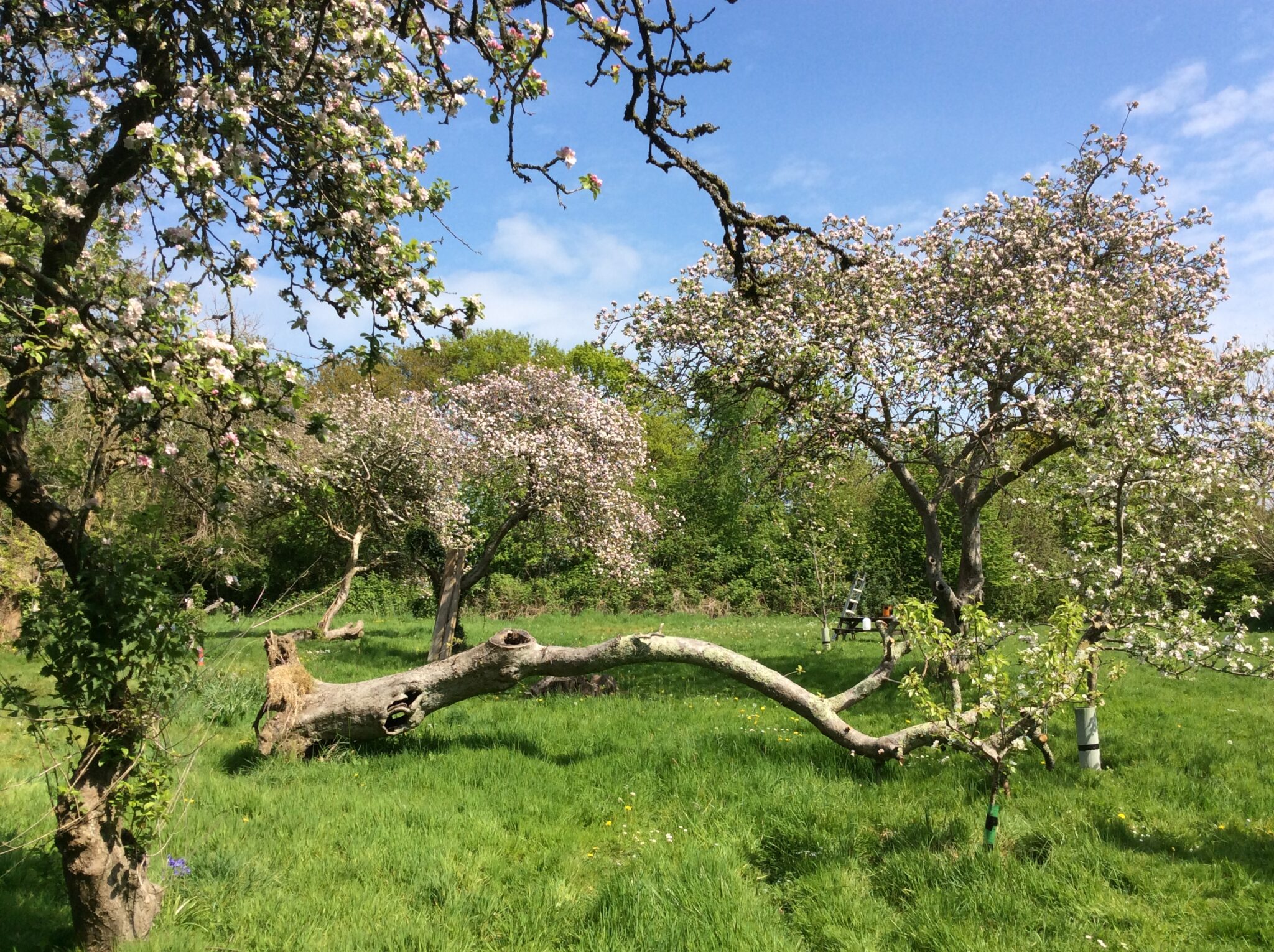What wildlife-rich looks like:
Traditional orchards are a much-loved part of Devon’s heritage and countryside. They consist of large fruit trees on vigorous rootstocks, planted at low densities and often occupying the same land for centuries. Managed without chemicals, they are hotspots for biodiversity and provide a rich variety of habitatsThe natural environment in which an animal, plant or other o... More in both trees and grassland layers.

